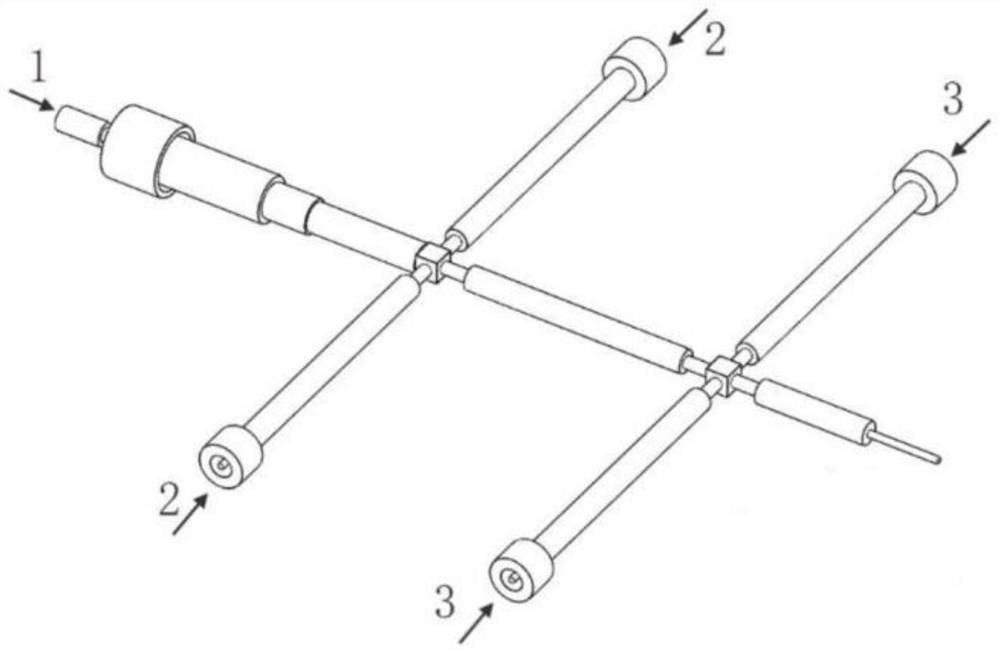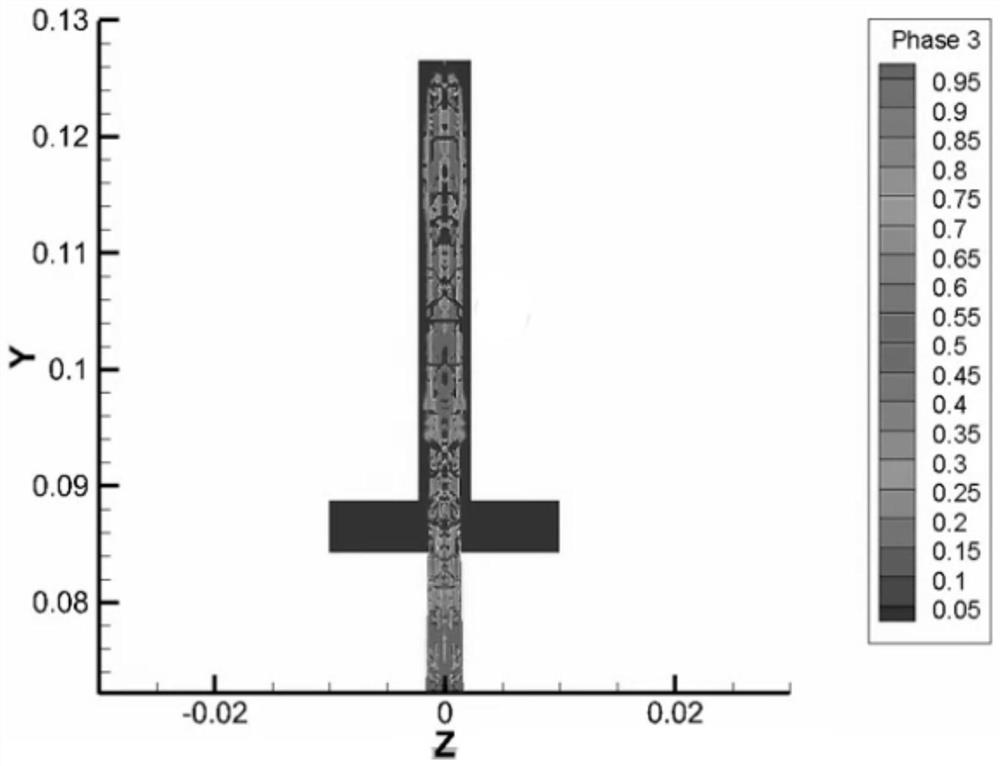Method for preparing zirconia hollow film by microfluidic control
A zirconium dioxide and microfluidic system technology is applied in the field of preparation of ceramic films to achieve the effects of uniform distribution, high synthesis efficiency and uniform film thickness
- Summary
- Abstract
- Description
- Claims
- Application Information
AI Technical Summary
Problems solved by technology
Method used
Image
Examples
Embodiment 1
[0039] Steps include:
[0040] (1) Material preparation
[0041] External phase: surfactant Span 80 (1.5wt%), 0.25vol% tetramethyldiethylamine (TMEDA) is added in the silicone oil; Above-mentioned Span 80 and tetramethyldiethylamine are the final concentrations in the silicone oil ;
[0042] Intermediate phase: zirconium sol precursor: zirconium gel precursor is composed of 2.5mol / L zirconium oxychloride (ZrOCl 2 ) aqueous solution, 4.5mol / L urea (CON 2 H 4 ), 0.8mol / L citric acid (C 6 H 8 O, ), 10wt% polyethylene (PVA) was mixed in a volume ratio of 2:3:0.8:1.5, followed by adding 2.66g of yttrium nitrate (Y(NO) 3 ) 3 ·6H 2 O), the mixture was heated to 90 °C and slowly stirred to 30 mL; then 0.10 μmol / L pH probe-carboxyfluorescein 2',7'-bis(2-carboxyethyl)-5(6)-carboxyfluorescein (BCECF) was added to the sol in the composition;
[0043] Internal phase: 60g molten paraffin (melting point 27°C);
[0044] (2) Preparation of gel film
[0045] Use a syringe pump to pa...
Embodiment 2
[0054] Steps include:
[0055] (1) Material preparation
[0056] External phase: silicone oil and surfactant Span 80 (1wt%), 0.125vol% tetramethyldiethylamine (TMEDA) is added in the silicone oil;
[0057] Intermediate phase: zirconium sol precursor: zirconium gel precursor is composed of 2mol / L zirconium oxychloride (ZrOCl 2 ) aqueous solution, 4mol / L urea (CON 2 H 4 ), 0.5mol / L citric acid (C 6 H 8 O), 8wt% polyethylene (PVA) were mixed in a volume ratio of 2:3:0.8:1.5, followed by adding 1.33g of yttrium nitrate (Y(NO) 3 ) 3 ·6H 2 O), the mixture was heated to 90 °C and slowly stirred to 22 mL; then 0.09 μmol / L pH probe-carboxyfluorescein 2',7'-bis(2-carboxyethyl)-5(6)-carboxyfluorescein (BCECF) was added to the sol constitute;
[0058] Internal phase: 50g molten paraffin (melting point 27°C);
[0059] (2) Preparation of gel film
[0060] Use a syringe pump to pass the material into the channels of the microfluidic system described in the appendix. figure 1 As s...
Embodiment 3
[0069] Steps include:
[0070] (1) Material preparation
[0071] External phase: 2wt% surfactant Span 80, 0.25vol% tetramethyldiethylamine (TMEDA) is added in the silicone oil; Above-mentioned Span 80 and tetramethyldiethylamine are the final concentrations in the silicone oil;
[0072] Intermediate phase: zirconium sol precursor: zirconium gel precursor is composed of 2.5mol / L zirconium oxychloride (ZrOCl 2 ) aqueous solution, 4.5mol / L urea (CON 2 H 4 ), 0.8mol / L citric acid (C 6 H 8 O, ), 10wt% polyethylene (PVA) was mixed in a volume ratio of 2:3:0.8:1.5, followed by adding 2.66g of yttrium nitrate (Y(NO) 3 ) 3 ·6H 2 O), the mixture was heated to 90 °C and slowly stirred to 30 mL; then 0.10 μmol / L pH probe-carboxyfluorescein 2',7'-bis(2-carboxyethyl)-5(6)-carboxyfluorescein (BCECF) was added to the sol in the composition;
[0073] Internal phase: 58g molten paraffin (melting point 27°C);
[0074] (2) Preparation of gel film
[0075] Use a syringe pump to pass mat...
PUM
| Property | Measurement | Unit |
|---|---|---|
| pore size | aaaaa | aaaaa |
| pore size | aaaaa | aaaaa |
| pore size | aaaaa | aaaaa |
Abstract
Description
Claims
Application Information
 Login to View More
Login to View More - R&D
- Intellectual Property
- Life Sciences
- Materials
- Tech Scout
- Unparalleled Data Quality
- Higher Quality Content
- 60% Fewer Hallucinations
Browse by: Latest US Patents, China's latest patents, Technical Efficacy Thesaurus, Application Domain, Technology Topic, Popular Technical Reports.
© 2025 PatSnap. All rights reserved.Legal|Privacy policy|Modern Slavery Act Transparency Statement|Sitemap|About US| Contact US: help@patsnap.com



